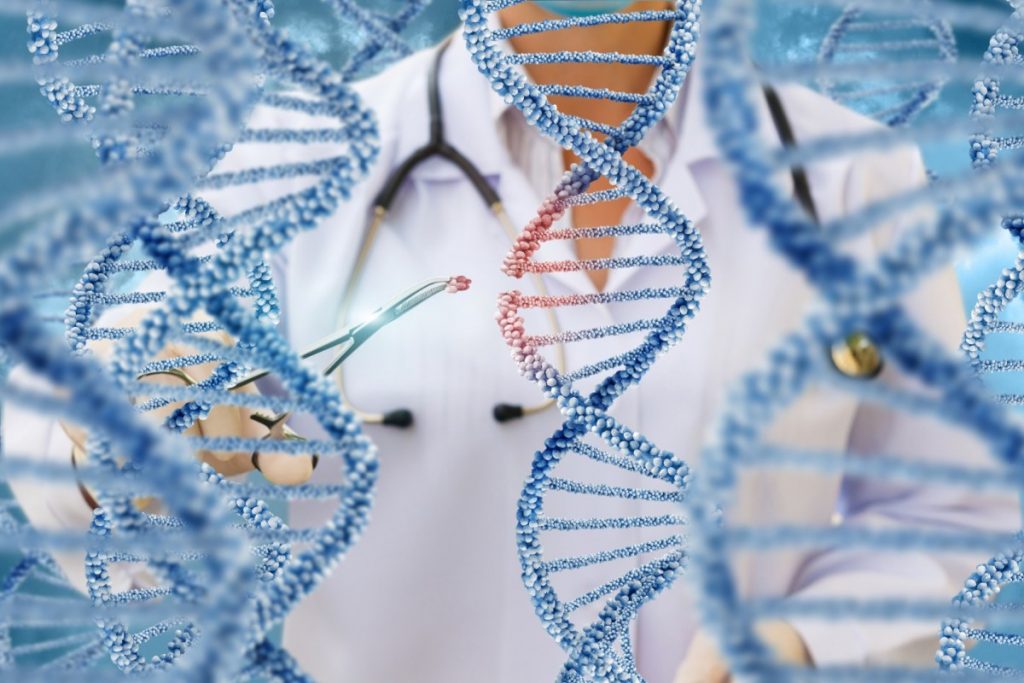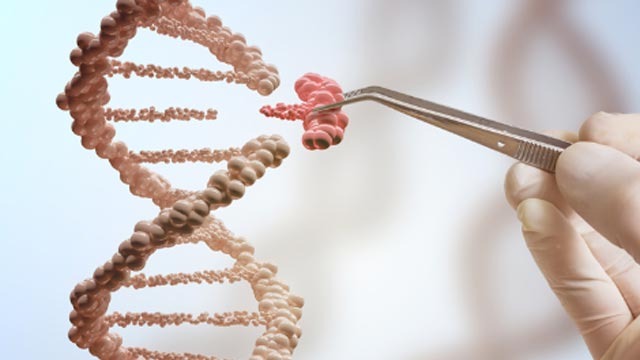RIO DE JANEIRO, BRAZIL – US researchers are developing a rapid test for Covid-19 that could diagnose an infection within 40 minutes. The new technology is still experimental and is based on the revolutionary CRISPR genetic editing technique.
This system works as a text editor that allows changing the genetic material (DNA) of any living being. The technique was developed in 2011 by Jennifer Doudna and Emmanuelle Charpentier and represented an unprecedented revolution in basic research.
Little by little it also paves the way for the experimental treatment of a number of diseases, including cancer. Now, a team from the University of California in San Francisco, using Doudna’s original concept, is showing that this powerful tool can also be applied to the genetic material of the novel coronavirus, made from RNA.

“This technology is very interesting because it would allow the development of a test that anyone could perform in their home very quickly,” says Jennifer Doudna, a researcher at the University of California in Berkeley. “This could detect an infection, particularly in asymptomatic cases.”
The RNA is the intermediary molecule that reads the written instructions in the DNA and converts them into proteins, the molecules that perform vital functions. All living beings, from microscopic bacteria to colossal blue whales, need DNA to live and reproduce.
The coronavirus’s strategy is to penetrate into the middle of this process and to convince our cells that it is not an outsider. This enables it to use the cells’ own machinery to produce copies of itself. Our genome is stored in a spiral formed by two very long strips of DNA that staple to each other like a zipper. The material of the coronavirus, in turn, is made from a single strip of RNA, and this is the weak point that the North American team exploited.
CRISPR is modelled on the immune system of a number of microbes discovered by the Spaniard Francis Mojica in 1993, when he was studying unicellular beings from the salt flats of Santa Pola (east of the country). These organisms keep in their DNA genome fragments of the virus genome that they find throughout their lives. When the virus reappears, the bacteria trace it and activate a protein known as Cas, which cuts the virus genome in two and kills it.
The San Francisco team developed a CRISPR molecule that contains three elements: the genetic sequences of two genes of the novel coronavirus, which serve as a guide; the Cas-12 protein, which serves as scissors; and a third fragment of fluorescent DNA, as published in Nature Biotechnology.
The test uses a sample taken from the patient’s nose or mouth. First, chemicals are added to transcribe the RNA into DNA, because the Cas-12 can only cut DNA. If there is a virus, the guiding part attaches itself to the genome of the virus and activates the Cas-12, which is programmed to cut the chains of genetic material from a single strip in the sample.
This way, it also cuts the fluorescent strip and makes it glow. Lastly, a lateral flow test is performed, a simple process very similar to pregnancy tests, and a second black strip is then displayed that points to an infection. The whole process takes just over 40 minutes.
This technology is based on the prototype developed by Doudna in 2018 and was patented by a company to which she is linked, Mammoth Biosciences. According to Doudna, the company applied to the American Food and Drug Administration (FDA) for an emergency approval of the test in the context of the Covid-19 pandemic, but detailed development has yet to be completed so that the test is simple enough to be performed at home following basic instructions. “I believe we have a 50 percent chance of getting this test ready for use in this pandemic if we manage to complete all the regulatory steps,” says Doudna.
Feng Zhang’s team, another pioneer of the CRISPR technique working at the Broad Institute at the MIT and Harvard and involved in a long legal battle against the University of California over patents for this technology, has also developed a similar test for the novel coronavirus, which in this case is able to directly detect the virus’ RNA without the need to transcribe it.

“I believe we are looking at the beginning of a second conflict because we are the first to apply this technique to the diagnosis of Covid-19,” said Lluis Montoliu, a researcher at the National Center of Biotechnology (CNB) in Spain.
“On the one hand, in Doudna’s test, the virus detection capacity is one tenth of PCR. This is not a problem if the viral load is medium or high, but it could result in false negatives if the individual is at the very beginning of infection or coming out of it,” he explains. “On the other hand, this technique requires simpler chemical reagents than PCR and does not require specialized staff to perform it, which is an advantage,” he explains.
The next step in this race was clear, and the first to do so was another US team, led by Stanford University’s Lei Qi. His team developed a CRISPR to detect the virus’ RNA and kill it by cutting it in half. The coronavirus genome is a simple strip of RNA. At each end it contains protective molecules that mask it so that it cannot be detected and eliminated.
The new tool, christened PACMAN (“CRISPR antiviral prophylactic for human cells”), is aimed at an intermediate region of the genome, to which it can be easily attached and activate the scissors, which in this case is the Cas-13d protein, capable of directly slicing the RNA. The system is able to eliminate 80 percent of genetic sequences of the coronavirus in human lung cells, according to a study published in Biorxiv, yet to be reviewed by other experts.
The study adds that only six CRISPR variants would be required to eliminate 90 percent of all known coronaviruses. This tool “has the potential to be implemented quickly to fight coronavirus pandemic variants,” write the authors.
This type of genetic editing would be more feasible than the DNA-centric one, as it does not require penetrating the cell nucleus and manipulating its sacrosanct sequence, where any fault or defect introduced could lead to damage or be passed from generation to generation. But RNA is a vital molecule to life and it is possible that this type of intervention cuts not only the RNA of the virus, but also that of its host. The Cas-13d molecular scissors is in this respect more precise, as it does not cut indiscriminately.
Molecular biologist Miguel Ángel Moreno Mateos, researcher at the Andalusian Center for Developmental Biology, is one of the leading Spanish specialists in these molecular scissors. In a recent work, his team explored the effectiveness of Cas-13d in embryos of zebrafish and mice. “What we saw is that the technique is clean, safe and efficient, because it cuts 80 percent of the target sequences and causes no damage; the animals develop normally,” he notes.
Just this month, a team of Chinese scientists announced the application of these scissors for the first time on adult animals. They demonstrated that they can administer CRISPR to mice suffering neuronal death and convert glia immune cells from their brains into new neurons, which relieved paralysis and Parkinson-like symptoms, as explained in Cell magazine. The work points out that this may be a new way to address untreatable neurological conditions in humans.
But like any other potential therapy, these versions of CRISPR now face the so-called valley of death: the long process of pre-clinical validation in animals and the required testing in humans, in which over 95 percent of all experimental treatments fail.
“This is a promising system, but we still need to develop a means to safely and efficiently pass it into the patient’s cells, for example their lungs, without causing damage,” warns Moreno Mateos, whose team uses this technology to disable specific RNAs for basic studies on the role of certain genes in animals.
“As for Covid-19 therapies, the ones that currently offer the most possibilities are those that are already approved for other uses. The issue is that probably none of them are perfect, and that is where CRISPR has much to say for its ability to specifically break down the genome of this and other viruses. There is a very promising field of research,” he says.

